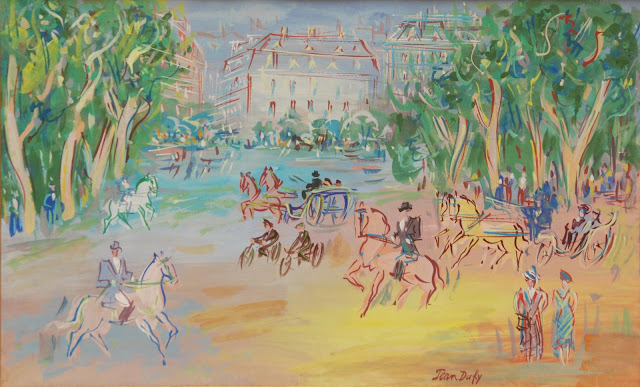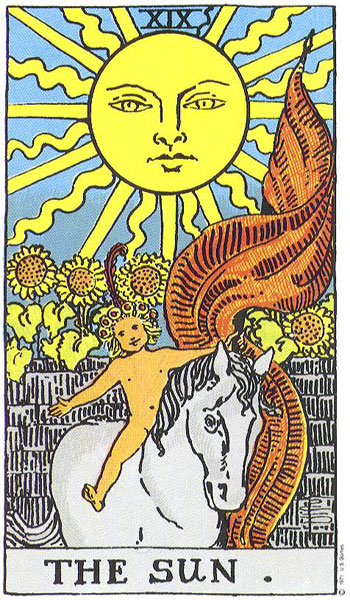by Darius Milhaud
1919
15 minutes
Orchestration: 2 flutes (2nd = piccolo), oboe, 2 clarinets, bassoon, 2 horns, 2 trumpets, trombone, percussion (bass drum, cymbals, guiro, tambourine), and strings
From LA Philharmonic website:
Rejected for military duty at the start of World War I, Darius Milhaud joined the diplomatic corps as secretary to the French ambassador to Brazil, Paul Claudel, better known as a poet and playwright. The French entourage arrived in Rio de Janeiro in January of 1917, to be joined there by another newly anointed "diplomat," a friend of Milhaud's from Paris, the poet-composer Henri Hottenot. Both Claudel and Hottenot were to become librettists for Milhaud operas. The story, even before we arrive at Le boeuf sur le toit, is a fascinating and delightful one, for the details of which I refer the reader to Milhaud's memoir, My Happy Life (originally titled Notes Without Music).
Shortly after the war, Milhaud and Francis Poulenc, the latter having served at the front, became part of a loose affiliation of artists inspired by the quirkily inventive composer Erik Satie. The other members were Georges Auric, Louis Durey, Germaine Tailleferre, and Arthur Honegger. The glue that held the group together was Jean Cocteau (1889-1963), writer, filmmaker, visual artist, and, as the Grove Dictionary puts it, "aesthetic activist," for which, read public relations genius. Much of Cocteau's productive life was dedicated to fulfilling Diaghilev's command when the two first met in 1909: "astonish me!"
The group called itself Nouveaux Jeunes, but the critic Henri Collet dubbed them Les Six, and the title stuck long after its members had gone their separate ways. They were musically a disparate group united by a common dislike of the mysticism of César Franck and the "vagueness" of Claude Debussy. Their likes embraced - to greater or lesser degree - the music of the Parisian cabarets, jazz (just beginning to make its way across the Atlantic), and their older contemporary Igor Stravinsky.
"We used to meet regularly at my home over a period of two years," wrote Milhaud in his memoirs. "Paul Morand [a poet] would make cocktails before we went off to a little restaurant at the top of rue Blanche… After dinner we would roam the Montmartre fairground, delighted with the old-fashioned roundabouts, the strange shops… the rifle ranges, games of chance, menageries, the din from the barrel-organs with their perforated rolls that blared out simultaneously every tune heard at that time in the Paris music halls and revues… Eventually we returned to my home. The poets read their verse and we played our latest works… Many fruitful artistic collaborations may be traced back to these gatherings, including works illustrating what some referred to as the 'New Music-hall Aesthetic'."
Cocteau, who had made a name for himself with his madcap scenario for Satie's ballet Parade in 1917, had another hit two years later with the scenario for Le boeuf sur le toit, created while the ink was still wet on Milhaud's score. Milhaud always claimed that he detested comedy of any sort (he said he'd leave that to Poulenc, the true joker in the group), yet he created uproarious comedy - with more than a little help from Cocteau - with the present work. The title, literally "The Cow on the Roof," comes from the name of an imaginary bar (a restaurant called Le boeuf sur le toit opened in Paris in 1922, two years after the first staging of Milhaud's work): a rowdy, by the sound of it (Milhaud's sound), watering-hole cum dance-hall.
The composer wrote, "haunted by my memories of Brazil, I assembled some popular melodies - tangos, maxixes, sambas, and even a Portuguese fado - and transcribed them with a rondo-like section recurring between each successive pair… suitable music for a Charlie Chaplin film. At that time, silent films were accompanied by fragments of classical music, rendered by a large or small orchestra, or a single piano - according to the financial means available. Cocteau said my idea was a waste, suggesting instead using it for some sort of stage show, which he would undertake to put on… Typically, hardly had he conceived an idea than he carried it out. For a start, we needed financial backing. Jean took the seating plan of the Comédie des Champs-Élysées to the Comte de Beaumont, who undertook to book in advance, at a high price, the boxes and first row of the stalls. A few days later, as if at the wave of a magic wand, the entire theater was booked up, with the Shah of Persia paying 10,000 francs for a front seat from which he could not see a thing, but was himself in full view of everyone…
"Cocteau created a pantomime scenario for my music, set in an American bar during Prohibition," which had recently been instituted. "The characters," the composer continued, "were a Boxer, a Negro Dwarf, a Lady of Fashion, a Red-headed Woman Dressed as a Man, a Bookmaker, A Gentleman in Evening Clothes, a Barman who serves drinks to everyone present." After some brawls, much laughing and tipsy dancing, a Policeman enters and - again the magic wand! - Le boeuf sur le toit is transformed into a milk-bar, the clients acting out a rustic scene and dancing a pastorale as the clients sip their milk drinks. The Barman switches on a huge fan, which decapitates the Policeman. The Red-headed Woman dances, standing on her hands ["like the Salome in Rouen Cathedral"], with the Policeman's head. The customers slowly depart, swaying in all directions, and the proceedings end with the Barman presenting a huge bill to the now-reconstituted Policeman.
The characters were, it should be noted, played by clown-acrobats from two noted circus troupes, the Cirque Médrano and the Fratellini. "In contrast with the lively tempo of the music, Jean made all the movements slow, as in a slow-motion film… Raoul Dufy did the scenery… At the first performance [also on the program were works by Satie, Auric, and Poulenc]… Vladimir Golschmann conducted our little orchestra," Milhaud noted.
- Herbert Glass, after many years as a columnist-critic for the Los Angeles Times, has for the past decade been the English-language annotator and editor for the Salzburg Festival.































 How Schwarzenneger ran for office on a whim and apparently governed that way as well; then left to his life of luxury leaving the state in his wake a nightmare of debt.
How Schwarzenneger ran for office on a whim and apparently governed that way as well; then left to his life of luxury leaving the state in his wake a nightmare of debt.